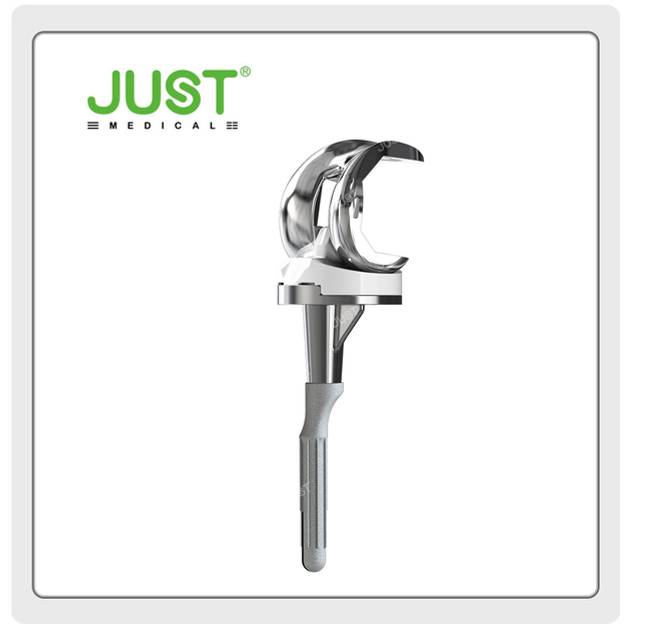How to Choose an Artificial Knee Joint Prosthesis?
 Jan. 27, 2021
Jan. 27, 2021
Artificial joint replacement is the ultimate procedure for the treatment of advanced knee disease and is a well-established and productive treatment option. Joint replacement has become popular and widely accepted in developed countries in Europe and the USA, with the number of joint replacements in the USA currently approaching one million per year. In the major hospitals of our major cities, this technology is also being mastered by specialists and used for the benefit of a wide range of patients. Modern artificial knee joint prostheses are developing very rapidly, but the majority of patients do not know much about joint prostheses and the choice of a suitable joint prosthesis is a concern for patients who need a knee joint replacement.
The artificial total knee joint prosthesis consists of three parts.
1. Femoral prosthesis: placed in the distal femur femoral condyle prosthesis, composed of metal alloy.
2. The tibial prosthesis: this can be a single prosthesis design, consisting of highly cross-linked polyethylene. It can also be a combined design with two components, consisting of a metal tray and a high cross-linked polyethylene spacer. The spacer is fixed or slides over the metal tray. The femoral prosthesis slides over the tibial component.
3. Patellar prosthesis: placed on the residual bone bed of the patella, it forms the patello-femoral articular surface between the condyles of the femoral prosthesis and consists of a high cross-linked polyethylene with a metal backing plate. A total knee replacement in the usual sense means that these three components are matched to replace the diseased surface bone of the corresponding knee joint.

Classification of artificial knee prostheses
Depending on the area of use, there are unicondylar, bicondylar and tricompartmental (total knee) prostheses. According to the fixation method, they can be divided into cemented and non-cemented (biological) fixed prostheses. Depending on the degree of restriction of the prosthesis design, it can be divided into non-restrictive, partially restrictive, highly restrictive and fully restrictive prostheses.
How to Choose an Artificial Knee Joint Prosthesis?
1. Choice of unicondylar prosthesis: The unicondylar prosthesis is a non-restrictive prosthesis. For simple lesions of the medial or lateral interval, a unicondylar replacement is theoretically an option. A successful unicondylar replacement allows for maximum preservation of the joint's tissue structure and motor function, and leaves room for a second TKA procedure.
2. Choice of fixation method: For knee prostheses, the better long-term follow-up results of cement-fixed prostheses have led to the widespread acceptance of this type of prosthesis. In knee replacement surgery, the role of bone cement is no longer just to fix the prosthesis, but more importantly to strengthen the bearing strength of the bone bed, especially on the tibial side.
3. Choice of total knee prosthesis with different degrees of restriction: The mechanical restriction of the knee prosthesis provides the mechanical stability of the prosthesis, but at the same time creates a contradiction with the mobility of the joint. In general, less restrictive prostheses allow for better joint motion, while placing higher demands on the integrity of the joint stabilisation structure and operating technique. More restrictive prostheses are designed to provide additional mechanical stability to the prosthetic joint, but may therefore result in more bone cutting and loss of some joint mobility, and may lead to mechanical loosening of the prosthesis-bone interface due to their restrictive nature.
High Flexion Total Knee System
1. With the same tibial tray design, product multi-function.
2. The maximum to retain bone mass.
3. All femoral condyle match with tibial tray perfectly, close to customization.
4. Optimized trochlear groove.
5. Effective resolutions to bone defects.













